|
I have recently found myself with a backlog of spoons to carve, despite my best efforts to fill orders a soon as possible. Over the course of the last few months, I have gone from putting things up for sale on Instagram to having enough orders to last me for a week or more. In the process, the amount of carving I try to do has tripled, from one spoon a day to at least three.
This is a sign that my pricing structure that I have chosen is working, and that people are appreciating what I do. But it comes with a price, which is the physical and mental limits to the space I can give carving in my life. I used to be comfortably within those limits. Now I go right up to them every day. Carving spoons is just one piece of what I do to earn a living. This time of year I edit scientific manuscripts (Van Driesche Scientific Editing) and I scythe people's properties. I make custom fitted scythe handles, and I teach scything and carving both in private lessons at my home and in larger workshops. I teach workshops on gardening and landscape design and I write everything from essays to ebooks to full book projects for my own businesses and for pay. In a few months I will be pruning my ten acre Christmas tree farm. I will harvest my garlic. It's a lot of hats. On top of this I have two young daughters and a wife who need and deserve some of the better parts of me. So the days get full. Today I have corresponded with three separate people about lessons, two different people about commissions and projects, completed the acceptance forms for a grant awarded to my tree farm, printed out the paperwork for one folk school I will be teaching at next year and corresponded with two more. I edited a manuscript on the thermal tolerances of a beetle in China that keeps ragweed in check. I took my dogs for a walk, accidentally rolled over the paw of a neighbor's dog, and ended up paying the vet bill (over $500) because it was the right thing to do. I dropped off fifteen spoons at two stores in the valley. And oh yeah, I carved three kick-ass spoons. It would be easy to not see this from Instagram, the vehicle most of you readers found this from. I post moments I want to remember, things I am interested in or proud of. All the incremental, tiny cans I am kicking down the road, that together add up to me doing this thing we all love, are only dimly lit. But it is this, the emails and texts and direct messages and the endless, ever changing to-do lists on scraps of paper that keep it all afloat. This is not unique to me. Most people juggle more obligations than they talk about. And within this context, the hours I spend carving every day are a blessing, a balance to the parts of me using just my brain or just my body. But would I want to carve all day long? No way. That is not sustainable either. My hands would give out. I would get bored doing just one thing. So I will need to get used to managing a waiting list, of always having the next job hanging over my head, because the alternative is to push so hard on the carving that all the other delicately balanced pieces of my life get toppled. I know all of the pressure is coming from me: you all are very kind and patient and don't mind waiting a week or two to get your spoons. It is my temperament to want a clean desk, a swept floor, ready for the next thing. I like to be open to the possibilities. But this is what, for me, success looks like: a scrap of paper with a list of things to do tomorrow, and that list is a long one. Thank you for all your support. I am deeply grateful.
1 Comment
I saw some spoons this morning that blew me away. They were by a talented Scandinavian carver named Daniel (instagram handle @storslojd) and they were a set of salad servers in unpainted birch. What stunned me was how much energy they had, and upon trying to express to him how much they moved me, I realized that their energy stemmed from their imperfections. They are deliberately left rough, but it is the sort of rough that speaks of an easy comfort with perfection. The lines were just right. The finish was smooth where it needed to be smooth. The proportions were spot on. The inside of the bowls were loosely done in a scalloped, quick fashion, and this is what gave the pieces their tremendous vibrancy.
It got me thinking, that what we are so often chasing when carving a spoon-- perfection-- is maybe not what we should be chasing. Instead, I want to chase this energy. In the same way Vincent Van Gogh painted the writhing forms of trees in a way that no one could ever describe as perfect, yet was masterful and breathtaking, I want to do with wood. I want to OWN it to the point where things don't need to be perfect to be perfect. Now obviously, most of us who are drawn to carving long enough to get good at it are of a meticulous bent. I am not one such. I don't get off on finish carpentry or grain or intricate patterns. What I want is deeper, underneath the skin, a sense of rightness that is entirely separate from these things. I used to think it was pure functionality. I used to think it was organic form choices. Now I think it's something more to do with the energy of imperfection. I'm reading a book right now called Originals, by Adam Grant, that is all about the unexpected ways people become original and their contributions to the world. In one chapter, Grant explains that scientists and artists and writers are often divided into two camps: the first camp is conceptual innovators, who make leaps of creativity early in their careers but peak very early; the second is experimental innovators whose strongest work happens later in life, that builds and builds on repetition and growth. Applied to spooncarving, I think most of us start out wanting to be conceptual innovators, wanting to make our mark by coming up with a shape or a way of doing things or a look or a decoration that is OURS. I certainly did. But more and more I want instead to be an experimental innovator, content to carve simple forms over and over, letting the small changes build up and build up until I find myself in different territory than where I started, not because I boldly set out but because I put one foot in front of the other, day after day. I want to find myself to Daniel's place of courageous imperfection, where the piece is inseparable from it's distinctive markings. This is a difficult place to reach: it is not as easy as passive imperfection, which is a lack of skill to make the wood do what you want. This is instead a place of creation, of letting go, of using just enough hammer to drive the nail and no more. And I want to set myself up to peak late. I want to be in my sixties and have people say that I'm producing the finest work I've ever carved. I want to be an experimental innovator, easing my way into new ground, and I want that ground to be joyous and rippling with power and energy, easygoing and effortless yet unmistakeably mine. It will take time to get there. Here's hoping it takes my whole life. I wanted to write briefly about how I price my work, since various craftspeople have commented that my prices seem ridiculously low. Pricing is deeply personal, so if you are reading this and disagree, please don't think that I am implying that you need to or ought to do something differently. We all do want we think is best, and we all will change our strategies and prices many times over the years.
My own history with pricing comes from being a farmer. This is a different mindset than many craftspeople have, since farmers all recognize that prices fluctuate with timing and quality and markets that have nothing directly to do with you and what you are selling. You simply react. There seems to be a mindset in the crafts community to price based on time and materials, which has led, I believe, to the increase in wooden spoon prices we have seen in the last year or two. If it takes you two hours to carve a spoon, then it is worth two hours of your labor, plus a little to cover tangential costs, right? I think this is misleading, because the price is always an agreement between you and someone buying. You can set the price at whatever you want, but if it is so high that nobody or only a few people want to buy, then clearly the price the market wants to pay is out of alignment with what you want to earn. You can address this several ways, and the smart things is to try to skew all of these factors in your favor. You can lower your price; you can reduce the time or other costs involved in making the object; you can also increase the perceived value of buying from you (notice that certain master spooncarvers have no trouble selling lots of spoons that maybe are no better than yours but at a price the same or much higher? That's because there is a perceived value to buying from them. This is something they have earned through smart moves and putting in the time). I used to sell at a comparable pricepoint to everyone else, but quite frankly no one was buying and looking back, I don't blame them. A spoon has to be pretty damn amazing to be worth $25 when you have a mortgage and kids and all the expenses of adulthood. I don't want to carve spoons for rich people (although I don't have a problem with selling to them). I want to carve spoons for EVERYONE. Including my neighbors, who I was too embarrassed to tell what I was charging. There's a sign right there that you are charging too much, when you find yourself defending the price. The thing should be priced so as to need no explanation. Anyway, I found that by selling at a reasonable price, spoons are now moving off the shelf so fast that I basically never have any around, which gives me a kick in the pants to keep carving. Sure, I am not making as much per sale as I might, but I am a MUCH better carver now than I was a year ago, and this is largely due to the demand I have facilitated with my price. Not having spoons around also keeps me from getting hoarding tendencies or from second-guessing the worth of what I do. I'm always focused on the next spoon. Low prices also force me to be more focused and efficient in design and execution. I am a better craftsman for this constraint. Finally, I think it is doing a disservice to all the truly master carvers who are selling at a higher price (I'm looking at you, Jarrod and Robin and Jojo and Barn and Eamonn and Yoav and anyone else who wants to self-identify here). Most of us are journeyman carvers. We are in the middle part of the process, producing good work, sometimes just as good as those in this other category, but we are still unknown on the bigger stage. Our names are not opening doors. We are not masters yet, and our prices should reflect that. Something I think a lot of spooncarvers gloss over is the fact that both Robin and Jarrod have said that they spent YEARS selling cheap and in quantity and that this process honed their skills. You can't skip this step. You might think you can, but wishing doesn't make it so. After some back and forth, here are the prices I have settled on. Eating spoons are $12. Cooking spoons and scoops are $15. Spreaders are $8. There is no difference between wholesale and retail prices. These are prices that I feel comfortable with, and that let me sleep well at night and explain what I do to acquaintances without embarrassment. While I earn the least, of all the things I do, carving, I earn more doing this per hour than I ever have farming. In addition, the skill I have developed has enabled me to start teaching, which pays much more per hour. For me, pricing is part of a strategy, and I am in it for the long game. I am using price to get better. I am using price to inform my choices. I am using price to acknowledge my place in this community, and I am using price to push back on something I love which I worry is becoming unaffordable. I welcome your thoughts. Today I got to learn how to strip basket willow. I am in the middle of a multi-year push to grow and wholesale basket willow as well as start weaving my own baskets. This goal started five years ago when I purchased one whip of basket willow from Fedco Trees, which I have cut back and propagated every year to increase my plantings. Currently, I now have about a thousand willows, which are a year or two away from producing whips in quantity. I took a class a month back with Mary Fraser, a young woman living a couple of towns over who apprenticed in Scotland and who now specializes in large baskets and wicker coffins. At that class I offered my services to help strip the bark off a batch of willow she harvested this spring, and so today I returned to spend three hours stripping bark. Here is how it is done. When I arrived, the willow we were to strip had been sitting with its cut ends in buckets of water for about a month. They had started to leaf out and send out roots. The bark was juicy and easy to strip. Stripping was a two part process. The first step was to pull it through a brake, a set of metal jaws that lightly crushed the stem and loosened the bark. The brake was clamped to a post, and you start with the thin end and pull to the thick end. Brakes cost about $125, a reasonable price when you consider that the difference in price between white willow (that which has been stripped) and brown (willow with the bark on) is about 30%. Furthermore, Mary told me that she hasn't found any US source for white willow. There are importers from Europe, or you can do it yourself, but this is clearly an under served niche that I intend to explore. I like the way the white willow looks, very clean. It dries super fast, so we sorted it into buckets, one six feet and over and one four feet and under. White willow dries quickly and takes less time to soak before weaving than brown willow, since the bark acts as a significant barrier to water loss and gain. While you can mix and match willows with different colored bark to make some beautiful patterns, the white willow is what I think of when I think classic laundry basket. That's what I'm going for.
This spring I planted about seven hundred willow cuttings at the Christmas tree farm and at my home, and next year I aim to plant about twice that much. At that point I should have between two and three thousand willow stools, which should give me a significant amount of willow to use and wholesale. I like the idea of stripping it to make a more refined product, and I found this process to be simple and pleasant. It would be an excellent activity to share with my daughters, even as young as they are now. Mary told me that in willow-growing regions of England, it used to be common for school to be suspended for this portion of the spring so that children could help their families in this important economic activity. The white willow will take about a month to dry, and should be stored out of the weather to retain their clean color. They need to be soaked for a day or two prior to weaving. While I won't be stripping any more willow this year, this is something I will likely be doing this time next year. In the meantime, if you are a basket weaver and interested in purchasing domestically grown, white willow, be in touch. I plan to charge $15/ pound, which is a couple dollars less than the imported stuff. I just finished reading a book that I wanted to share with you, as it has given me a lot to think about. The book is The Art of the Sale by Philip Delves Broughton, who attended Harvard Business School and was shocked to find out that how to sell was not in any way part of the curriculum. He found that this was common across all business schools, a shared uneasiness and disdain for sales as a subject, and so he set out to write this book to examine what works and doesn't work in the world of selling stuff.
This book holds particular interest for me because I have recently taken the plunge to being completely self-employed. For many years now I have had a Christmas tree farm and an online business editing scientific articles, but I have also had seasonal, part-time jobs that largely functioned to provide some sort of safety net, a baseline income and a way to project myself to the world if I was feeling insecure and didn't want to explain the many tentacled thing that is my work. I am now about half a year into working entirely for myself (it should be noted that this was not a large leap: the farm and editing provide about two thirds of my income, so in many ways the transition has not felt as scary nor have I had to be as brave as those of you who plunge ahead with one thing, needing it to sink or swim) and I have come to realize that the thing I am most scared of, and the therefore the thing I am trying to face full-on, is the act of selling myself. I throw a lot of stuff on the wall to see what sticks, so I am selling spoons on instagram and fielding phone calls about scything lessons and working early mornings at various writing projects, but ultimately it boils down to this notion that what I have to offer is worth paying for. That has at times been a hard step to take. What I have found interesting in Broughton's book is his ultimate point, that selling, at its best, is an act of service. When you are helping someone else, whether it is to learn a new skill, or to bring a little more pleasure into the daily acts of cooking and eating, or just inspiring them to dream their own dreams, that is what you are selling. That is what has value. The spoon? It's just a spoon, and we could assign whatever value to it you want based on a whole lot of metrics and estimations of time and costs, but in the end it boils down to the pleasure it will give someone as they use it. It has helped me to think about selling this way. It helps me to provide excellent service, in terms of the quality of what I'm selling, be it a lesson or a physical item, and in terms of the price I'm asking, and in terms of the follow-through I bring to bear with each customer, and finally in terms of the value the thing I am selling will bring to someone's life. I had this yesterday with a woman who called me up to see if I could do some scything for her to clear some overgrown sections of her property. As we got talking, it became evident that she had a scythe but didn't have the tools or knowledge to use and maintain it, nor the confidence to use it in such a public place as her lawn. Now normally I feel squeamish about suggesting people spend more money, feeling like I am trying to upsell them into something they didn't want, but as I offered to teach this woman how to use and repair her scythe, and offered to teach her to mow her own lawn and offered to make her a special bench she needed for this process, she became more and more excited. Elated, even. I was helping her in exactly the way she wanted to be helped. It was a revelation to me. I am not looking to sell things just for the sake of selling them, though I do need to make money and I feel very grateful to be able to align what I want to do with what people seem willing to buy. I want to be helping people. And in helping them I want to be helping myself to become a better craftsman, a better provider for my family, a better human being, if that's not too much to ask. I had been thinking of selling as a necessary evil I had to stomach to achieve these things. But now I'm not so sure. Broughton has brought me around to thinking, as the Arts and Crafts movement in England believed back in the 19th century, that selling is "a means to escape the jaws of industrialized commerce. It was how you could live in a modern, capitalist society, while doing exactly what you wanted to do". It was an excellent book. Anyone who sells their work, in any form, should hunt it down and read it. |
Hi there!My blog has evolved into a series of short essays on the nature of entrepreneurship, craftsmanship, and their overlap. If either of these topics is something you think about, you will probably like this. Archives
November 2020
Categories |
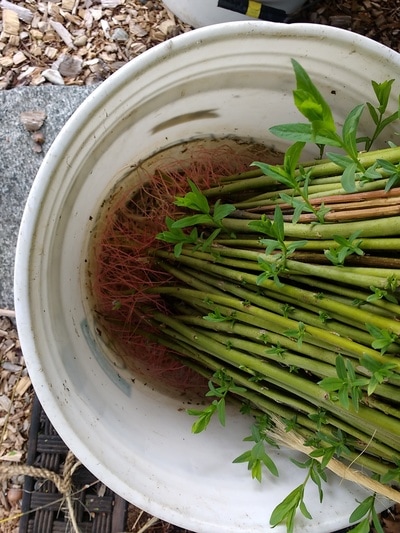
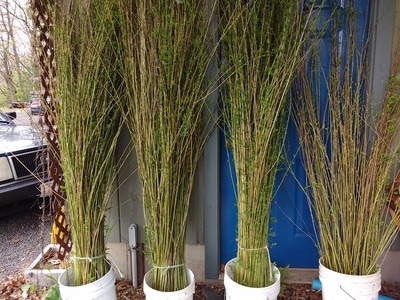
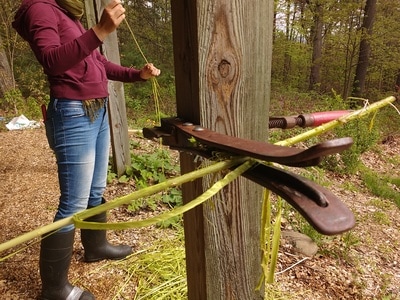
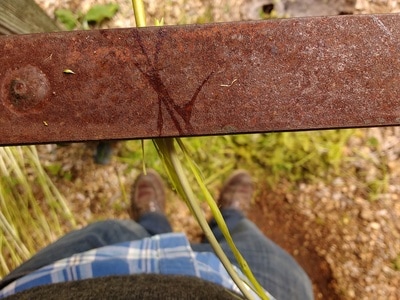
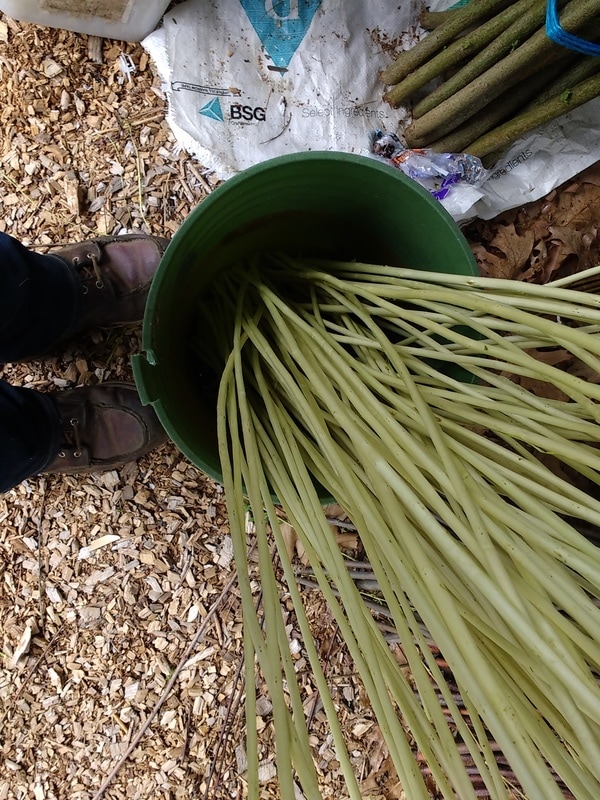
 RSS Feed
RSS Feed